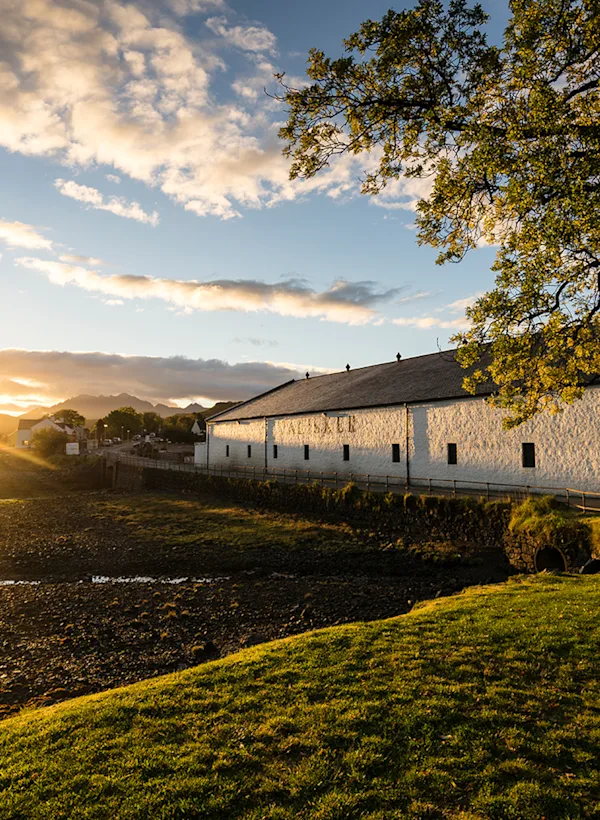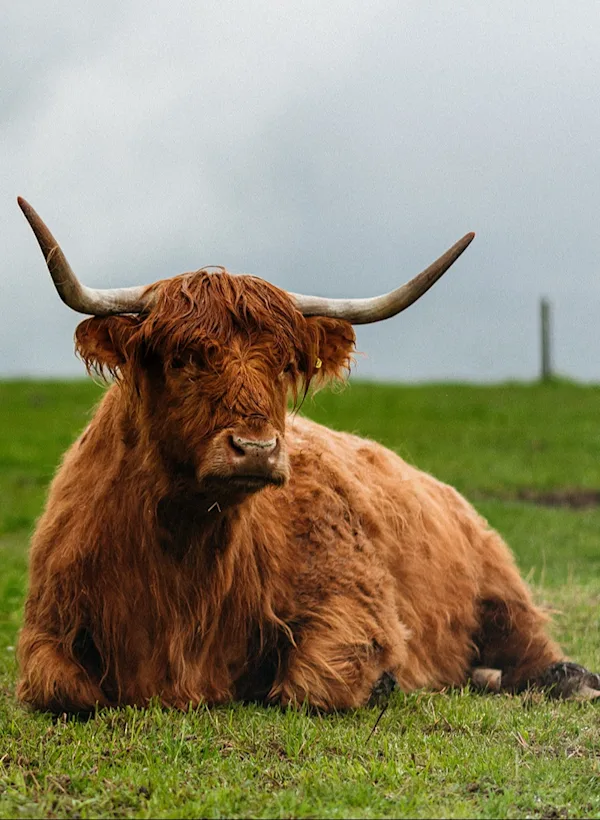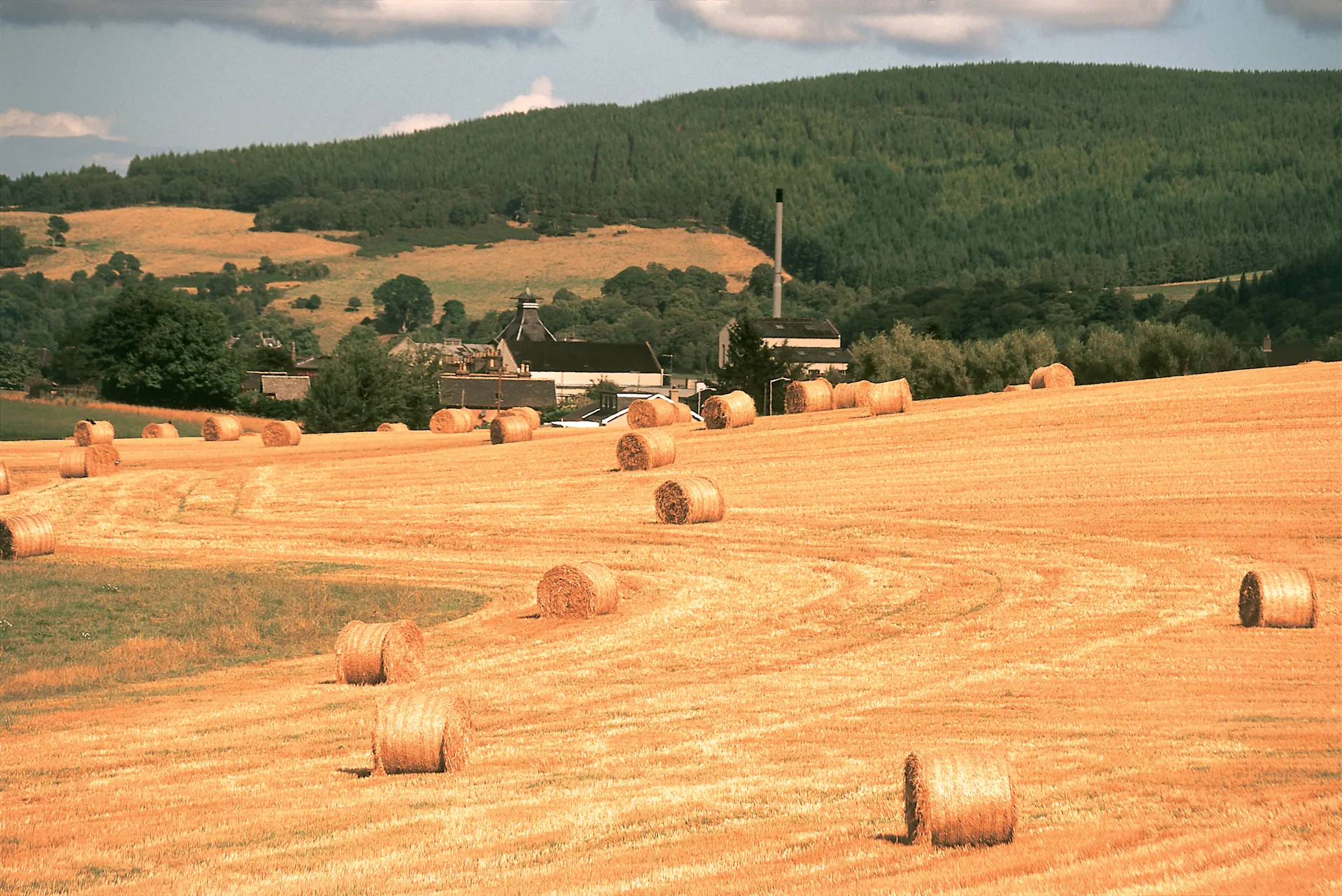A Guide to Summer in Scotland - What to See, Do and Expect from the Regions
Paris? You can love that in the springtime. London calling? Call back another time. This summer, there’s only one place that beckons. Think whisky’s heartland. Imagine the freshest seafood you can hope for. Home of some of the UK’s biggest and best - the highest mountains, the biggest national parks, and some of the oldest traditions. We, of course, are talking about Scotland. And this summer, let us explain why it’s time to indulge in a Highland fling with the country.
Scotland in the summer - what’s the weather like?
We love Scotland. We do. But don’t expect summers here to look like they do, say, in Spain. The rain here doesn’t stay on the plane. The rain stays ready to fall whenever it deigns, but it needn’t be a pain.
There’s an old adage that, in Scotland, you can see all four seasons in one day. And that sums up what to expect.
Per Visit Scotland, June, July and August are normally the warmest months in Scotland, with average maximum temperatures around 17°C. While it’s hard to predict it precisely, the different regions tend to follow patterns. For example, rainfall around the Highlands tends to be higher than average. Even during summer, showers are common around the mountainous towns and coastal regions.
On the plus side, across Scotland, summer brings plenty of daylight thanks to its northerly latitude. Across many regions, you can enjoy up to 18 hours of daylight during summer’s peak, with twilight stretching right on into the small hours.

Is it easy to travel across Scotland - will you need to drive?
For the most part, especially connecting major cities and areas of interest (like coastal towns and the main islands) public transport across Scotland is reliable and runs steadily throughout the summer months.
However, if you are planning on exploring off the beaten track and visiting more mountainous towns or rural areas, having access to a car might come in handy.
To drive in Scotland, you need a valid driving licence from your home country. If you're coming from within the EU, you can use your existing EU licence. If you're coming from outside the EU, your licence is usually valid for up to 12 months in Scotland.
You should check ahead of time if you need an International Driving Permit (IDP), which could be the case if your licence isn’t English.

Distilleries are one of the top attractions - plan ahead
If you’re planning a distillery tour during your summer Scottish sojourn - and, really, why wouldn’t you? - the top tip from distillery staff is to book in advance. While previously describing a day in the life of Oban, a hugely popular Highland distillery, one of the team members told us, “In our summer season, we do tours every half an hour, and on busy days, we can have up to 15 experiences running a day.”
You can assume that this is the picture across all the whisky regions so book a spot weeks in advance to avoid disappointment.
Summer in the Highlands
When it comes to Scotland’s rich and diverse landscape, a Highlands summer is all about the great outdoors. From stretches of unspoiled land for the very finest walks to some of the hardest and rewarding hikes up mountainous peaks and rugged vistas - with plenty of wild swimming, wildlife spotting and opportunities for boat tours along the way. If you didn’t consider yourself an outdoors person before, you will after.
Highlands distilleries
One of the busiest regions, the Highlands is home to a number of inviting distilleries, including Dalwhinnie, Blair Athol, Clynelish, Oban, Brora, Royal Lochnagar, Talisker and The Singleton of Glen Ord.
Highlands hikes, Munro-bagging and Ben Nevis
The Highlands are home to over 280 Munros - or mountains over 3,000ft. Some of the most popular climbs include Buachaille Etive Mòr and Loch an Eilein.
If you're already visiting a Highlands distillery, look for nearby peaks. For example, Royal Lochnagar is at the foot of the iconic Cairngorm Mountains, with several notable peaks nearby. Near Oban, there's Ben Cruachan.
One cannot possibly talk about Scottish peaks without mentioning Ben Nevis - indeed the highest mountain in Scotland and the United Kingdom.
Located in the Highlands, close to the town of Fort William, Ben Nevis towers as an ancient giant. Once an active volcano, there are still signs of its dormant power for those who make it to the end of the impressive walk. At the summit, there is evidence of an explosion in the form of light-coloured granite.
Fun fact about Ben Nevis to impress those as you climb your way to the top - its name has two meanings, translated from the ancient Gaelic language. One means 'mountain with its head in the clouds', thanks to its iconic mist-shrouded peak, and the other is ‘venomous mountain.’ We’d suggest not sharing that one as you take the tough climb…
Scenic walks and cycling around the Highlands
For a gentler pace, try the Great Glen Way, Glen Affric, or the Falls of Foyers near Loch Ness. Or cycle the Nevis Range, Laggan Wolftrax, and Cairngorms National Park, considered world-class biking routes that attract adventurous cyclists from all over the globe.
Near the Royal Lochnagar distillery, visitors can enjoy a trek to the Balmoral Cairns after a day of top-quality whisky, or take their distillery purchases to a picnic at one of Queen Victoria’s historic favourite spots around Loch Muick.

Wildlife in the Highlands
When you’re not booked on to a distillery tour or clambering up a mountain, you might just want to sit back, make yourself a little whisky drink with drams bought from the distilleries and take in the scene. Fortunately, the wildlife on display at the Highlands is plentiful. What can you expect?
Dolphin spotting: Head to Chanonry Point near Inverness to spot bottlenose dolphins — one of the best land-based viewing spots in Europe.
Red deer and golden eagles: Visit Alladale Wilderness Reserve or Glen Feshie for the chance to spot some of Scotland’s iconic wildlife.
Fishing: The Highlands offer some of the best salmon and trout fishing in the UK. Local estates and lochs offer day permits for fly fishing.
Make a splash - water sports, swimming and boat tours
Bordered by both the Atlantic ocean and the North Sea, with thousands of fresh water lochs in between, water and whisky keep the Scottish Highlands plenty hydrated. Just some of the iconic lochs one might have heard of in the Highlands include Loch Ness (monster sightings not guaranteed), Loch Lomond, Loch Awe, Loch Morar, and Loch Shiel.
Paddle along peaceful lochs like Loch Maree or Loch Morlich with mountainous backdrops or look up local boat tours - there will be plenty as it’s a huge source of income for locals living around the coasts and near bodies of water.
If you prefer to brace the chilly waters - and, believe us, don’t be fooled by a warm day, Highlands waters will always be bracing - have a dip in some of the crystal-clear lochs like Loch Achilty, Loch Insh, and the world-famous Fairy Pools on Skye.


The best of the rest - what not to miss in the Highlands
Explore Urquhart Castle overlooking Loch Ness, Eilean Donan Castle, or lesser-known gems like Ardvreck Castle. There are also historic sites for those looking to delve into the endless and enchanting history of Scotland. Visit the Clava Cairns, a Bronze Age burial site near Inverness, or walk among the standing stones of Callanish if venturing to Lewis.
One thing Harry Potter fans won’t want to miss if you’re near Ben Nevis is the real life Hogwarts Express. Fans will recognise the vistas from the film, the magical train traversing around lush landscapes and mountainous vistas. Well, it’s actually the Jacobite Steam Train from Fort William to Mallaig.
Conjure up a ticket in advance, as they’re likely to sell out. The service typically runs morning and afternoon services between April and October each year.
For those looking for adventure, rev up your engines and take on Scotland's answer to Route 66 - the North Coast 500, a 56-mile loop of the best scenery the land has to offer. Think mountains, beaches, coastlines and hidden treasures.
Summer around Edinburgh and the cities
There’s nothing like summer in the city, and Scotland’s cities are vibrant, full of variety and welcoming to visitors.
Popular tourist spots around Edinburgh
Edinburgh, nestled in the Lothian region, typically welcomes milder weather throughout the summer, making it perfect to walk around the city and visit the many tourist hotspots.
Edinburgh is home to Johnnie Walker Princes Street, an award-winning and always popular tourist attraction that turns whisky outsiders into obsessives, and a place for experts to learn more, experience more and taste more.
From exploring Edinburgh Castle, ambling along the Royal Mile, hiking up Arthur's Seat, and visiting the Palace of Holyroodhouse, there’s plenty to do that won’t require any tickets or money.
For art and culture lovers, the National Museum of Scotland, the Scottish National Gallery, and the Writers' Museum are well worth a visit. Fancy some nature along with your city slicking? Check out the Royal Botanic Garden.

Summer events around Edinburgh
If you fancy immersing yourself in the cultural calendar of the capital city, Edinburgh's summer is packed with festivals and events.
Some highlights include:
The Edinburgh Jazz & Blues Festival runs in the later half of July
Edinburgh Festival Fringe - one of the most celebrated theatre and comedy festivals in the world, the Edinburgh Fringe runs in August
Royal Edinburgh Military Tattoo - for those looking to engage with true history, the Edinburgh tattoos take place each August and include performances from the British Armed Forces, Commonwealth and international military bands on the Esplanade of Edinburgh Castle.
This is a city of shifting light, of changing skies, of sudden vistas. A city so beautiful it breaks the heart again and again.
This is a city of shifting light, of changing skies, of sudden vistas. A city so beautiful it breaks the heart again and again.
-Alexander McCall Smith, on Edinburgh
Summer on Islay
Islay. Oh Islay. For most of the year, Scotland’s wind-beaten, characterful and rugged island is like something from another time. But as summer in Scotland makes its gentle move, something happens around Islay - the Queen of the Hebrides.
The windswept, wild vistas settle. The sheet of rain uncloaks to reveal a light, airy island. Forget the concept of brutal summers and unforgiving heat. Here, summer means soft breezes. Gentle, pleasant daylight stretching to as late as 10pm during the peak. A salty, fresh tang from the Atlantic Ocean in the air.

Distilleries on Islay
From the smoky, wilderness found in every drop of Lagavulin, to Port Ellen and Caol Ila, Islay’s distilleries make whisky that capture the rugged charm and scenic life on the island.
Each one promises something memorable and unique - from distillery exclusive products to quality-crafted cocktails on site at the prestigious bars. Make sure you check out each experience on offer and book in advance for the summer months.

The beaches of Islay
Islay's coastline boasts over 130 miles of beaches, from soft sand to shingles and everything in between. Machir Bay, on the west coast, is where to go for the classic golden sand, inviting you to stop clock watching and sit, read, or take in a long, 'clear-air for a clear-head' walk.
Scotland’s seafood paradise
Surrounded by the unspoiled Atlantic waters, Islay is known for some of the freshest seafood in all of Scotland - and, dare we say, the world.
Step into any local establishment and look for the fresh, seasonal offerings, that can include everything from lobster to wild salmon and scallops. We’re sure that many of the locals will be finely tuned to the perfect pairing of peaty whiskies with their seafood, so it’s always worth asking for their suggestions.

Summer around Speyside
Speyside is the perfect place to savour the spirit of Scotland - and we mean both definitions of the word. Nestled in Scotland’s whisky heartland, distilleries include Cardhu and Cragganmore.
As well as the whisky on offer, Speyside comes alive in summer. Colour blooms. Expect rolling barley fields, fragrant pine forests, and meandering rivers teeming with life.
Speyside walks and the Cairngorms National Park
Summer is the best time to immerse yourself in the stunning landscapes surrounding the River Spey. Try the Speyside Way, a long-distance walking and cycling route stretching from Buckie on the Moray coast to the Cairngorms.
Rather take things at your own pace? That's the way they do it at Cardhu, so it only makes sense to take a step back and relax.
Have an aimless amble around the gentle waters, with routes around Aberlour, Craigellachie, or Charlestown of Aberlour promising great views, a chilled vibe and a picture-perfect stop for a selfie.
Speyside sits on the northern edge of the Cairngorms, the largest national park in the United Kingdom, and home to majestic, ancient Caledonian forests, red squirrels, and world-class hikes up Carn Daimh or Ben Rinnes.
Traditional Scottish activities - it’s time for the Games
If you wanted a slice of the Scotland you see on postcards - kilts, bagpipes, people inexplicably throwing things very high - Speyside has you sorted.
There are events like the Dufftown Highland Games, as well as towns including Aberlour and Tomintoul hosting traditional games through the summer - think caber tossing, Highland dancing, and pipe bands.
Kilts not necessary, but always welcome.
There's only one thing to be wary of...
One last thing - you might be thinking ‘what’s the catch? Can Scotland really be such a wonderland?’ And now it’s time to confess. There’s something we haven’t shared. Ask any Scot - or anyone who’s passed through in the summer - and they’d warn you of one of the only downsides of the season. Midges.
While the cities might be abuzz with culture, and there’s a swarm of nature spots throughout the country, because of the latitude and the surrounding waters, Scotland is also full of the buzzing pests. The full midge season in Scotland typically runs from late April/early May through to late September/early October. However, the peak season, when they are at their worst, is generally from mid-June to August.
They don’t transmit any disease, but they can be annoying. To avoid itchy bites, wear long sleeves and trousers when hiking around damp or wooded areas. Bring midge repellant to wear overnight.
But, if a few midges (well, maybe more than a few...) isn't enough to put you off, we’d say summer in Scotland sounds like a sure thing.
Remember to book your spot in your chosen distilleries early and say "slàinte mhath" to a Scottish summer.




